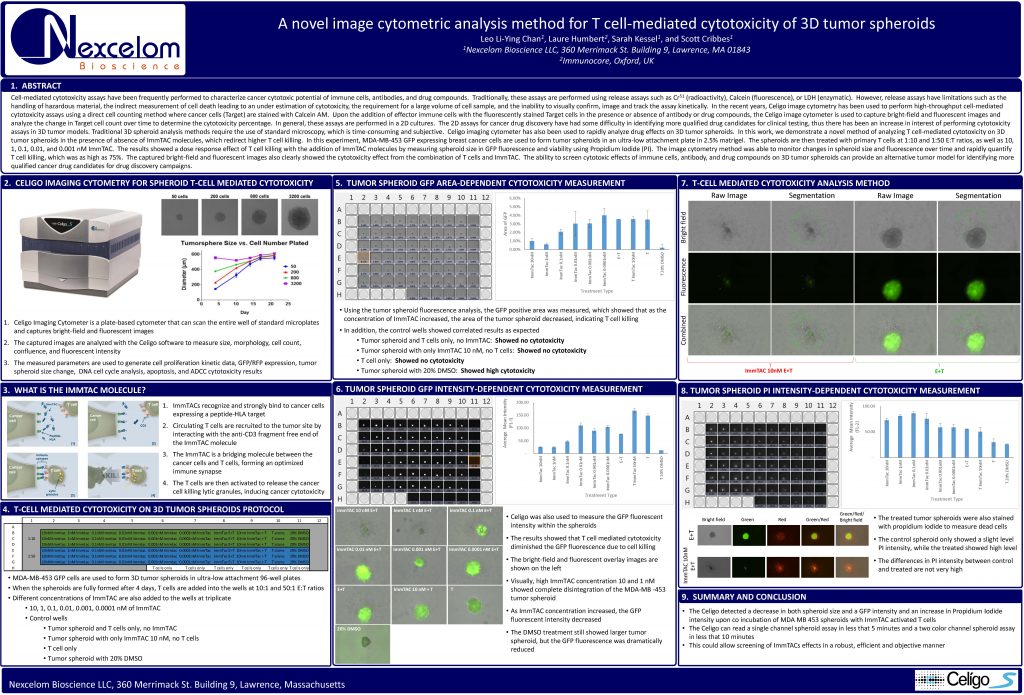A novel image cytometric analysis method for T cell-mediated cytotoxicity of 3D tumor spheroids
Leo Li-Ying Chan, Laure Humbert, Sarah Kessel, and Scott Cribbes
Cell-mediated cytotoxicity assays have been frequently performed to characterize cancer cytotoxic potential of immune cells, antibodies, and drug compounds. Traditionally, these assays are performed using release assays such as Cr 51 (radioactivity), Calcein (fluorescence), or LDH (enzymatic). However, release assays have limitations such as the handling of hazardous material, the indirect measurement of cell death leading to an under estimation of cytotoxicity, the requirement for a large volume of cell sample, and the inability to visually confirm, image and track the assay kinetically. In the recent years, Celigo image cytometry has been used to perform high-throughput cell-mediated cytotoxicity assays using a direct cell counting method where cancer cells (Target) are stained with Calcein AM. Upon the addition of effector immune cells with the fluorescently stained Target cells in the presence or absence of antibody or drug compounds, the Celigo image cytometer is used to capture bright-field and fluorescent images and
analyze the change in Target cell count over time to determine the cytotoxicity percentage. In general, these assays are performed in a 2D cultures. The 2D assays for cancer drug discovery have had some difficulty in identifying more qualified drug candidates for clinical testing, thus there has been an increase in interest of performing cytotoxicity assays in 3D tumor models. Traditional 3D spheroid analysis methods require the use of standard microscopy, which is time-consuming and subjective. Celigo imaging cytometer has also been used to rapidly analyze drug effects on 3D tumor spheroids. In this work, we demonstrate a novel method of analyzing T cell-mediated cytotoxicity on 3D tumor spheroids in the presence of absence of ImmTAC molecules, which redirect higher T cell killing. In this experiment, MDA-MB-453 GFP expressing breast cancer cells are used to form tumor spheroids in an ultra-low attachment plate in 2.5% matrigel. The spheroids are then treated with primary T cells at 1:10 and 1:50 E:T ratios, as well as 10, 1, 0.1, 0.01, and 0.001 nM ImmTAC. The results showed a dose response effect of T cell killing with the addition of ImmTAC molecules by measuring spheroid size in GFP fluorescence and viability using Propidium Iodide (PI). The image cytometry method was able to monitor changes in spheroid size and fluorescence over time and rapidly quantify T cell killing, which was as high as 75%. The captured bright-field and fluorescent images also clearly showed the cytotoxicity effect from the combination of T cells and ImmTAC. The ability to screen cytotoxic effects of immune cells, antibody, and drug compounds on 3D tumor spheroids can provide an alternative tumor model for identifying more qualified cancer drug candidates for drug discovery campaigns.

